[social_warfare buttons="Pinterest, Twitter, Facebook"]
I must admit, I was originally hesitant to plan gluten free travel to Namibia as someone with celiac disease. With little online information and gluten free being an unknown idea, Namibia was by far my most adventurous plan since the celiac disease diagnosis. Ultimately, I decided to take the leap and blaze the gluten free travel trail in this location. After all, this website is about overcoming the challenges of eating gluten-free to inspire others to live adventurously!
My arrival to Namibia was filled with anticipation and anxiety, but all negative feelings were swept aside when I stepped off the plane in Windhoek. I was struck by the vast open desert, wild midday winds that swept across the landscape, and the simplicity of the Namibian way of life. I felt I’d been transported back to an ancient time or jumped into a National Geographic magazine. This is Namibia’s charm, and the reason you’ll want to add this beautiful country to your bucket list as well. Better yet, I found it to be an excellent destination for the gluten free traveler!
Here are some of the adventures Namibia has in store for you:
- Etosha National Park is an African game viewing experience you will never forget
- You can visit a traditional Himba Tribe in the Northwest Kunene Region
- You can explore the famous Skeleton Coast
- Beautiful clear starry nights
- The “Grand Canyon” of Africa
- Abandoned Ghost Towns
- Sand Dunes and Extreme Sports
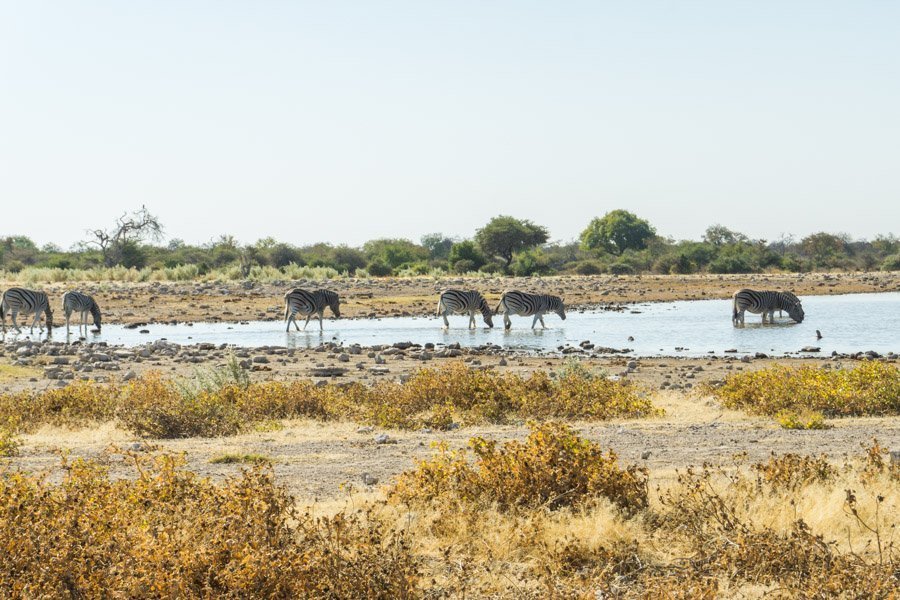
Zebra at Etosha National Park
Now that Namibia is on your bucket list, here’s what you need to know for safe and successful gluten free travel in this wild and wonderful destination!
Contents
What you need to know about gluten free travel in Namibia
Gluten free foods you can rely on
Where to get gluten free food
What you should bring from home
What you need to know about gluten free travel in Namibia
Food Labeling Laws:
As you wander through a Namibian grocery store, you’ll find fresh fruits, vegetables, and aisles of packaged products similar to those in the stores of more developed countries. Some of the items you check will have a full ingredient list and an allergen statement; contrarily, others will have no ingredients listed at all.
Namibia has no laws requiring ingredients or allergens to be listed on the packaging of food products. However, as one of the least densely populated countries in the world, Namibia does very little food production and packaging of its own. Most products are imported from South Africa and will therefore have ingredients labeled. South African products are encouraged but not required to clearly state allergens. We found variation with allergy labeling, but had no trouble finding safe gluten-free food overall.
Gluten free Restaurants and Catering:
As campers, we self-catered and bought nearly all our food from supermarkets. Lodges and camps will often serve buffet style meals and had little to no knowledge of gluten intolerance. When asking for gluten free foods, we were offered sourdough bread on multiple occasions - what a strange misconception! Many buffets have fresh fruits and hard-boiled eggs. Bananas grow well in Southern Africa and are a fresh and delicious treat you can get nearly anywhere. Many places were also willing to make hard-boiled eggs upon request in the morning.
“Pap”, a porridge traditionally made of cornmeal and water, is a common staple in Southern Africa and is frequently served at all meals. Be sure to check with the cook staff to make sure there are no additional ingredients such as spices, sauces, or dairy (if this poses a problem for you).
Since we did our own self-drive Namibia tour and safari, we cannot comment on safari guiding companies and their knowledge of food allergies/sensitivities. However, we suspect they may have a better understanding since they cater to tourists. Most tourists in Namibia come from Germany, the U.K., and the USA, so we expect the subject of “gluten free” has come up with many of these companies in the past.
Language Barriers:
The official language of Namibia is English, and most people have a good working knowledge of the language. German and Afrikaans are also widely spoken, especially in the areas south of Windhoek.
For most Namibians, English is their second language, so you can expect that discussing food allergies will provide a challenge. Most people preparing your food come from the native population and speak their traditional tribal languages. Oshiwambo is the most common of these languages, followed by the native languages of the Damara, Kavanga, and Herero people. We did not have allergy translation cards for these languages; allergy translation card companies do not have them in stock and special cards are expensive and only moderately useful because of the diversity of languages spoken. If you are planning to spend an extended period of time in Namibia and wish to eat out frequently, we would recommend purchasing a card from selectwisely.com in Oshiwambo.
Note: I brought an Afrikaans and Zulu gluten allergy translation card with me but did not find them useful since these languages are not common amongst cook staff in Namibia.
Unexpected Gluten:
An unfortunate discovery for us was that wheat gluten is added to many meat products. Be particularly careful of Doerewors and Boerewors sausages – every brand we checked contained wheat! In addition, Biltong can be a sketchy affair for gluten-free eaters, be aware of added wheat starch or wheat gluten. For this reason and because we needed food that would not easily spoil while traveling long distances, we opted to eat mostly vegetarian in Namibia.
Gluten free foods you can rely on
While the above notes show potential challenges for gluten free travel in Namibia, you will have no trouble if you are willing to self-cater many of your meals.
As campers traveling long distances, we chose to stock up on food in Windhoek. Here is the entirely gluten free grocery trip from our first day:
Fruits and Vegetables
While Namibia is a desert nation, you will find a variety of imported fresh fruits and vegetables. Every supermarket had its own collection of vegetables, so you’ll want to keep your dinner plans flexible. Bananas, apples, pears, and citrus fruits were abundant, and Southern Africa is known for having an abundance of avocado trees! We also came across broccoli, bell peppers, mushrooms, zucchini, and potatoes.
Nuts, Seeds, and Peanut Butter
Peanuts grow well in South Africa, and Namibians are big fans of peanut butter. You will find peanut butter anywhere you go. In addition, we found GORP mixes (Good Old Raisins and Peanuts), almonds, cashews, macadamia nuts, and sunflower and pumpkin seeds.
Dried Fruits
We found dried fruits everywhere! Dried mango, peaches, pears, and raisins were the most common.
Rice, Beans, and Pap
Every supermarket had rice and dried and canned beans. We have a fondness for baked beans and made a delicious dish of baked beans, broccoli, and rice on several occasions. Pap is a traditional African dish made of boiled cornmeal. You can purchase this cornmeal nearly everywhere.
Gluten free Specialty Foods
We found some delicious little gluten free labeled puffed rice squares with coconut, raisins and chocolate from a company called Tia. We also found rice cakes. We did not find gluten-free pastas, crackers, or other treats.
Other Foods
Cheese, fresh plain meats, and canned tuna were also staples in our camp kitchen this trip!
Beverages
- Savanna cider is gluten free and widely available. It is delicious!
- South Africa is widely known for its wine industry and you will find many varieties of South African wine in Namibian grocery stores. We have a particular fondness for Nederburg wines after his trip.
Where to get your gluten free food
Your best bet for well-labeled gluten free foods and fresh produce is a grocery chain known as the Spar. You can find well-stocked Spars and Super Spars in Windhoek, Swakopmund, and Opuwo. Be aware that the food selection decreases as you travel farther from Windhoek.
What you should bring from home
You will want to bring enough food to last until you can get to the grocery store in Windhoek. Here is what I had in my carry on bag as snacks to get from Johannesburg to my first food stop in Windhoek:
You can successfully eat a healthy gluten free diet in Namibia without bringing any additional gluten free foods from home. However, I would recommend bringing some of the following items since they will not be available during the trip:
- GF treat, like chocolate, or gluten-free cookies
- GF crackers
- GF bread
If you have celiac disease and/or are sensitive to cross-contamination, also be sure to bring your Packable Kitchen so you can prepare meals safely on the go!
The adventure that awaits you is well worth the challenges. Hopefully this post has given you the confidence to plan that once-in-a-lifetime gluten free travel to Namibia!
With love and gratitude, ❤ Jamie


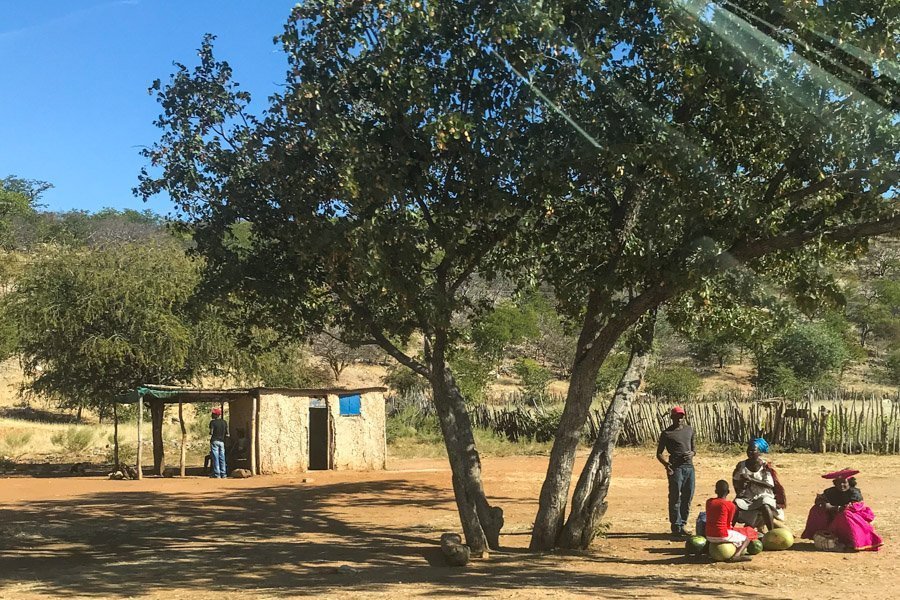
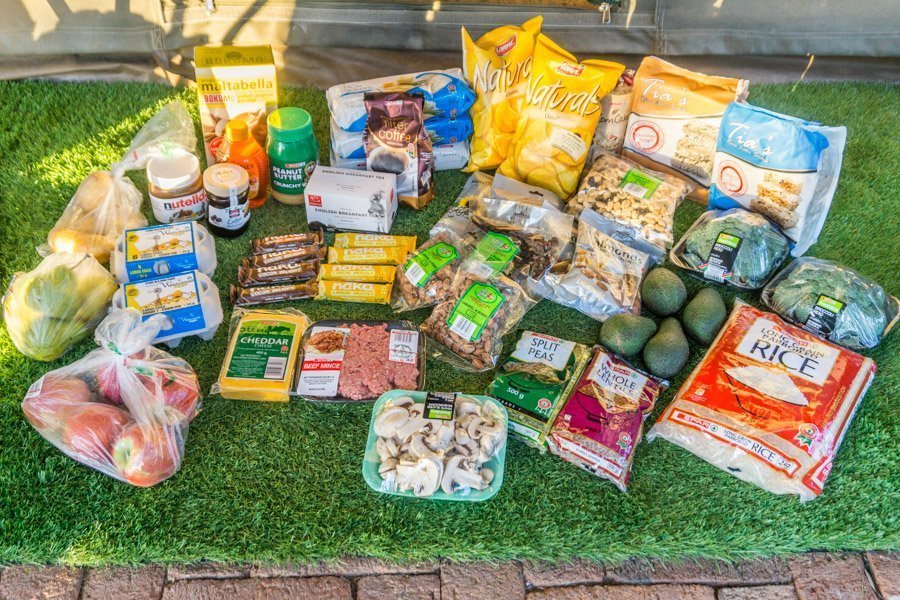
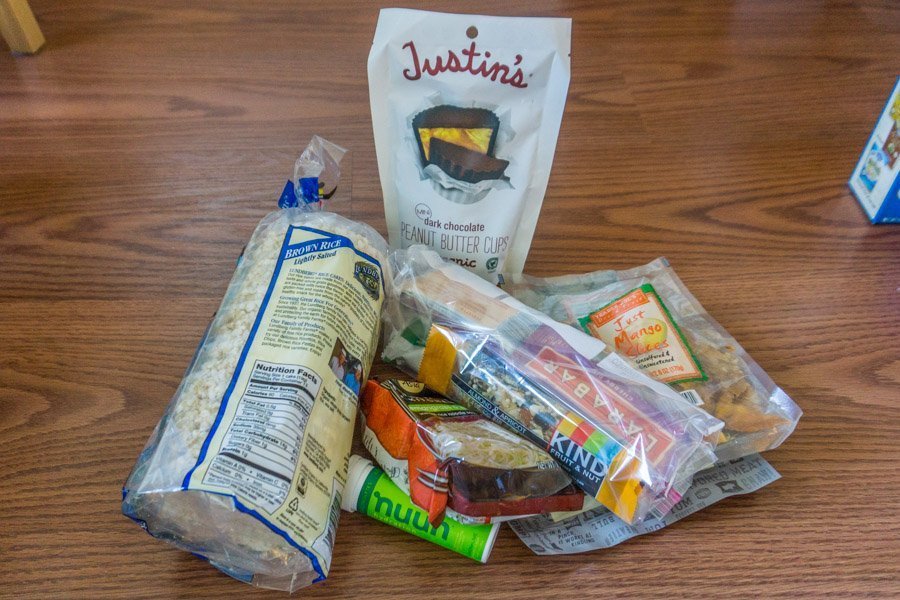
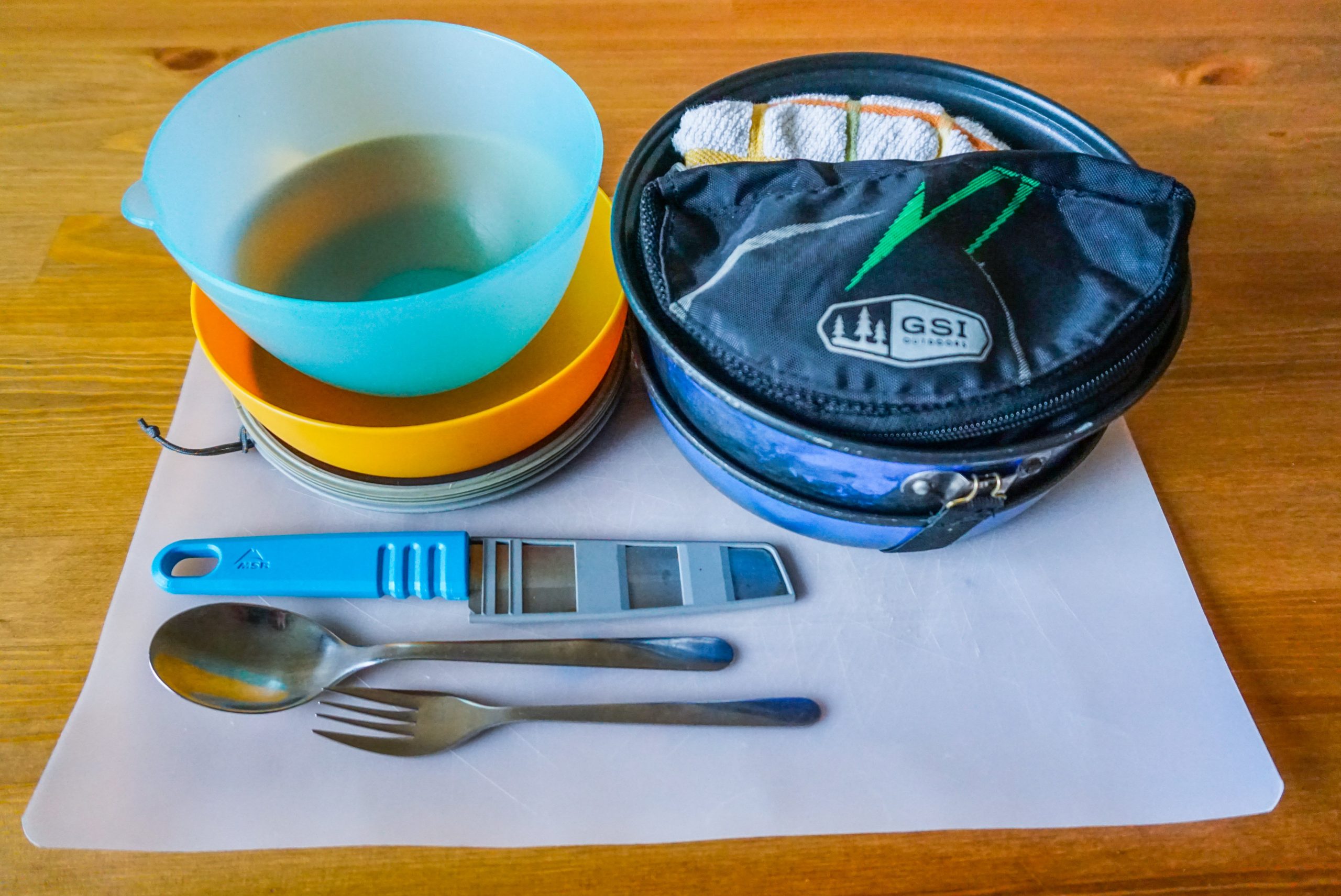
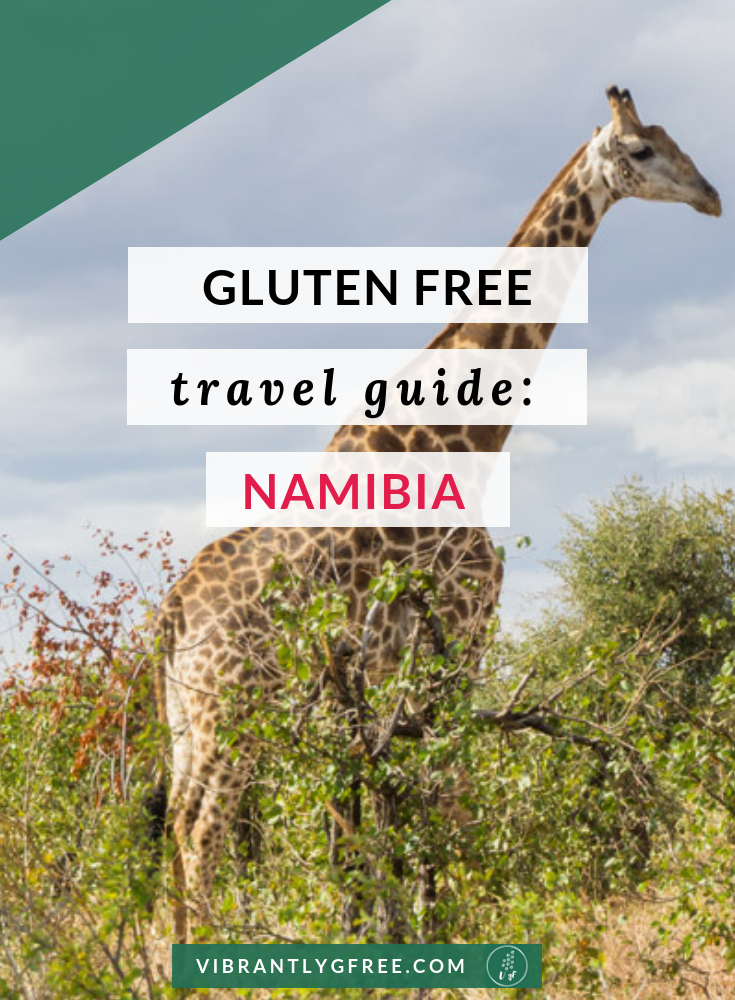
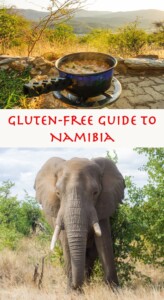
Iain
Hi Jamie, Some great tips. Off to Namibia with my son who is anaphylactic to gluten (plus eggs, nuts, lentils etc) so tend to look at coelic travel guides since his condition is rare. We live in UK and I have learnt that it's best to keep food simple and eat very plain food whichever country we are in. With no problems we as a family have travelled to South Africa, Malaysia, Canada and Europe with no problems, while my son has travelled solo to Greece, Cyprus, Spain and Poland - also with no problems. I believe that planning and researching are the keys to a stress-free holiday whichever country you go to, be it as a coeliac or as a person with life threatening food. allergies. Enjoy the world out there!
Jamie
Thanks so much! Have a wonderful trip. Namibia is easily one of the most fascinating places I visited!
Christine Bennett
Hi Erin
Thanks so much for sharing this.
I am a 60+ female & have just been diagnosed with coeliac disease. I also have gastritis/acid reflux issues (which has a list of can/can't eat before I even start on the coeliac stuff). I am also vegetarian (no meat/fish/eggs).
I'm travelling solo, independently, self driving around Namibia for 23 days in Jan/Feb 2019.
Being vegetarian & on my own, I have always preferred to take a travel kettle & just have a quick pasta meal, crackers, peanut butter, fruit etc in my room rather than try any restaurants etc.
My recent diagnosis has knocked me a bit & I'm starting to worry about my upcoming trip.
Your blog has been invaluable.
I'm relieved to see that cheese is available in Namibia (many countries that I have visited just don't have it).
I will have a cool bag/blocks with me & hope this will be OK to keep chilled stuff cold enough. I will be driving a SUV so I don't think there will be a fixed cool box in it.
I won't be camping but will be staying in a variety of guesthouses, B & B's and some lodges. There are a couple of 'high end lodges' where breakfast & dinner is included. I'm dreading those. As regards breakfasts, I don't do eggs & cereals/toast won't be an option so I guess it will just be a plate of fruit!
The 1 thing that I need to research is to see if there is any sort of instant rice noodle pouches/packets that I can buy (even if I need to take them with me from the UK). I need to be able to just add boiling water. I will only have a travel kettle so most of the time, I won't have access to a stove/microwave etc.
Several of the accommodations have got access to basic self catering facilities.
I have bookmarked your blog & it is going to be a very useful resource for me regarding my food.
Thanks again.
I hope you had a wonderful time in Namibia.
Celiac Sojourness
Hi Christine,
I am so glad that this information is helping you plan your trip! It seems we have a similar travel style with our portable kettles and just-add-water options.
I think your cool bag will work just fine. If it's very warm, you can also consider one of those coolers that you can plug into the cigarette lighter.
I've gotten pretty good with creative just-add-water meals lately. I've already started the next travel blog post on that one, so stay tuned! I made instant refried beans and rice a lot of my most recent trip, and I have a few other tricks up my sleeve that I'm looking forward to sharing.
As for the rice noodles, do you have any Thai Kitchen products there? I love the ones linked in my most recent post on packing gluten free food for long flights. Here's the direct link: Thai Kitchen Rice Noodles
Have a lovely trip, and thank you for your comment!
Nunchee
What an amazing adventure! Thank you for taking some of the fear out of travelling, especially for us with special dietary needs.
Celiac Sojourness
It was a fantastic experience! I hope you get the chance to go on adventures of your own 🙂
Erin
Such a wonderful post. Thank you so much for sharing. I had no idea you did the trip without a guide or tour group. WOW! Namibia sounds like it is doable for someone with celiac disease, you just need to do some extra planning and shopping. One day I will make it to Africa!
Celiac Sojourness
Thank you, Erin! It was an incredible trip, and I really hope you make it to Africa - it is an amazing place! From what I hear, Namibia is a great country to start in if you're hoping to travel without a group/guides because it is relatively safe, has good roads, and there's a lot to see.